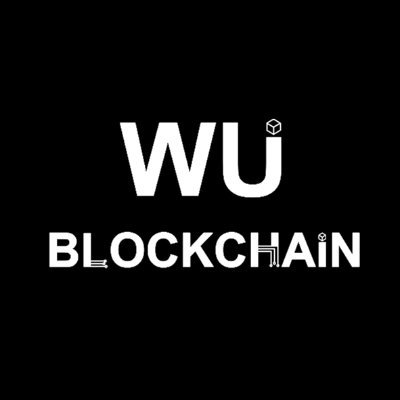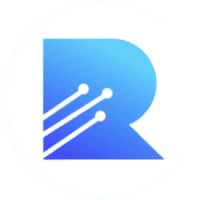


Preço de ZKsyncZK
Conversão de ZK para EUR
Como é a sua opinião sobre ZKsync hoje?
Sobre ZKsync (ZK)
O que é zkSync?
O zkSync é uma solução de escalabilidade de camada 2 do Ethereum que visa aumentar o rendimento das transações da rede e reduzir as taxas de transação, mantendo os valores essenciais de segurança e descentralização. Desenvolvida pela Matter Labs, a tecnologia zkSync de rollup de conhecimento zero (zk-rollup) aborda os desafios de escalabilidade do Ethereum.
Ethereum, a segunda maior blockchain do mundo, tem enfrentado problemas de escalabilidade e altas taxas de transação, principalmente durante períodos de alta atividade na rede. O zkSync visa resolver esses problemas agregando várias transações off-chain e enviando uma única prova à blockchain do Ethereum, reduzindo significativamente a potência computacional e os custos associados. Dessa forma, o zkSync é um desenvolvimento crucial para escalar o Ethereum de forma eficaz e sustentável.
Referências
Documentos oficiais: https://docs.zksync.io/
Site oficial: https://zksync.io/
Como o zkSync funciona?
O zkSync emprega a tecnologia zk-rollup para melhorar a eficiência da rede Ethereum. Basicamente, os zk-rollups agrupam centenas de transações off-chain, criando uma prova criptográfica de que essas transações são válidas. Essa prova é então enviada à mainnet da Ethereum para verificação. Como apenas a prova precisa ser verificada on-chain, o processo reduz significativamente a carga na rede Ethereum, gerando taxas de gas mais baixas e transações mais rápidas.
Além disso, o zkSync foi criado para ser compatível com a EVM (Ethereum Virtual Machine). Isso significa que os desenvolvedores podem implementar contratos inteligentes da Ethereum existentes no zkSync sem a necessidade de reescrever o código. Essa compatibilidade reduz a barreira de entrada para os desenvolvedores e facilita a migração contínua de aplicativos descentralizados (dApps) para o zkSync, promovendo assim uma adoção mais ampla dessa solução de escalabilidade.
O zkSync também incorpora a abstração de conta nativa, que aprimora a experiência do usuário ao permitir interações mais intuitivas e fáceis de usar com o blockchain. Os usuários podem automatizar pagamentos, pagar taxas de gas em qualquer token ou até mesmo conseguir que outras partes cubram as taxas. Essa flexibilidade torna a tecnologia de blockchain mais acessível a um público maior, impulsionando ainda mais a adoção do zkSync.
A segurança é outro aspecto fundamental do zkSync. O protocolo passa por extensas auditorias e testes de estresse para garantir sua robustez. Ao herdar a segurança da mainnet do Ethereum e acrescentar camadas adicionais de proteção, o zkSync oferece um ambiente altamente seguro para vários aplicativos de blockchain, principalmente os do setor financeiro descentralizado (DeFi).
O que é o token ZK?
ZK é o utilitário nativo e o token de governança do ecossistema zkSync. Desempenha um papel fundamental na manutenção e no aprimoramento das operações do protocolo. Um dos principais usos do token ZK é o pagamento de taxas de transação na rede zkSync. O uso de tokens ZK para taxas garante custos mais baixos em comparação com a mainnet do Ethereum.
Além das taxas de transação, o token ZK é parte integrante do modelo de governança descentralizada da zkSync. Os detentores de tokens podem participar dos principais processos de tomada de decisão, votando em propostas que afetam o futuro do protocolo. Essa abordagem democrática garante que o desenvolvimento e a evolução do zkSync reflitam os interesses coletivos de sua comunidade.
Além disso, o token ZK incentiva a segurança e a participação na rede. Os usuários podem fazer staking de seus tokens ZK para contribuir com a infraestrutura de segurança da rede, ganhando tokens adicionais como recompensa. Os provedores de liquidez do ecossistema zkSync são recompensados com tokens ZK, garantindo ampla liquidez para corretoras descentralizadas (DEXs) e outras atividades financeiras na plataforma. ZK tem uma oferta total de 21 bilhões de tokens.
O zkSync é um bom investimento?
Investir em qualquer criptomoeda, incluindo o zkSync, requer ponderação e pesquisas minuciosas. Devido à natureza volátil do mercado de criptomoedas, os preços podem oscilar bastante em períodos curtos. Antes de fazer um investimento, é fundamental entender a dinâmica do mercado, avaliar seu nível de tolerância ao risco e considerar o potencial de ganhos e perdas. Acompanhar as tendências do mercado e interagir com a comunidade de criptomoedas pode ajudar a determinar se o zkSync é um bom investimento para 2024.
Além disso, a diversificação é uma estratégia fundamental para gerenciar os riscos de investimento. Em vez de colocar todos os seus recursos em um único ativo, considere distribuir seus investimentos entre várias criptomoedas e ativos tradicionais. Essa abordagem pode ajudar a mitigar possíveis perdas e proporcionar um portfólio mais equilibrado. Mantenha-se sempre informado e preparado para ajustar sua estratégia de investimento em resposta às mudanças do mercado, garantindo que seu portfólio permaneça forte e bem posicionado para o futuro.
Como comprar zkSync (ZK)
Pensando em investir em zkSync (ZK)? Crie uma conta na Bitget em apenas 2 minutos e comece a operar ZK.
Artigos relacionados
zkSync (ZKSYNC): escal ando o Ethereum com provas de conhecimento zero
Relatório de análise de IA sobre ZKsync
Preço de hoje de ZKsync em EUR
Histórico de preços de ZKsync (EUR)
 Preço mais baixo
Preço mais baixo Preço mais alto
Preço mais alto 
Qual é o preço mais alto do token ZKsync?
Qual é o preço mais baixo do token ZKsync?
Previsão de preço do token ZKsync
Qual é o melhor momento para comprar ZK? Devo comprar ou vender ZK agora?
Qual será o preço do token ZK em 2026?
Qual será o preço do token ZK em 2031?
Perguntas frequentes
Quais fatores influenciam o preço do ZKsync?
ZKsync é um bom investimento?
Como a tecnologia da ZKsync afeta seu preço?
Onde posso comprar ZKsync?
Qual é a previsão de preço futuro para ZKsync?
Como a volatilidade do mercado impacta o preço do ZKsync?
Quais são os riscos envolvidos na negociação de ZKsync?
Como posso acompanhar o preço do ZKsync em tempo real?
Qual o papel das parcerias no preço do ZKsync?
Como o ambiente regulatório afeta o preço do ZKsync?
Qual é o preço atual de ZKsync?
Qual é o volume de trading em 24 horas de ZKsync?
Qual é o recorde histórico de ZKsync?
Posso comprar ZKsync na Bitget?
É possível obter lucros constantes ao investir em ZKsync?
Onde posso comprar ZKsync com a menor taxa?
Notícias sobre ZKsync
Atualizações sobre ZKsync
zkLink (ZKL): o futuro dos apps descentralizados multichain
zkSync (ZK): escalando o Ethereum com provas de conhecimento zero
ZeroLend (ZERO): o maior mercado de empréstimos para tokens de recuperação de liquidez
Dappad (APPA): simplificando os investimentos em blockchain com a tecnologia de abstração de contas
AutoAir AI (AAI): airdrops sem complicações
Como a atualização Dencun do Ethereum afetará o mercado cripto
Guia de usuário do Bitget Swap
Entendendo as camadas da Blockchain
Holdstation: futuro(s) ao seu alcance na zkSync Era
O que é uma blockchain de camada 2?
Mercado de ZKsync
ZKsync - Total de ativos por concentração
ZKsync - Endereços por tempo de manutenção

Preços globais de ZKsync
- 1
- 2
- 3
- 4
- 5
Como comprar ZKsync(ZK)

Crie sua conta na Bitget gratuitamente

Verifique sua conta

Converter ZKsync em ZK
Opere futuros perpétuos de ZK
Depois de abrir sua conta na Bitget e comprar tokens USDT ou ZK, você pode começar a operar derivativos, como futuros de ZK e operar com margem para aumentar sua renda.
O preço atual de ZK é €0.04147, com uma variação de preço em 24 horas de -6.21%. Os traders podem lucrar com um posições long ou short em futuros de ZK.
Siga traders de elite e faça Copy Trade de ZK.
Novas listagens na Bitget
Comprar mais
Onde posso comprar ZKsync (ZK)?
Seção de vídeos: verificação e operações rápidas

Conversão de ZK para EUR
Recursos de ZK
Tags:
Avaliações de ZKsync
Bitget Insights




Ativos relacionados
Informações adicionais sobre ZKsync
Visão geral da moeda
Relacionado a moedas
Relacionado ao trading
Atualizações de moeda
Operar
Earn
ZKJ/USDT
SpotZKJ/USDT
MargemZKJ/USDT
Futuros USDT
































